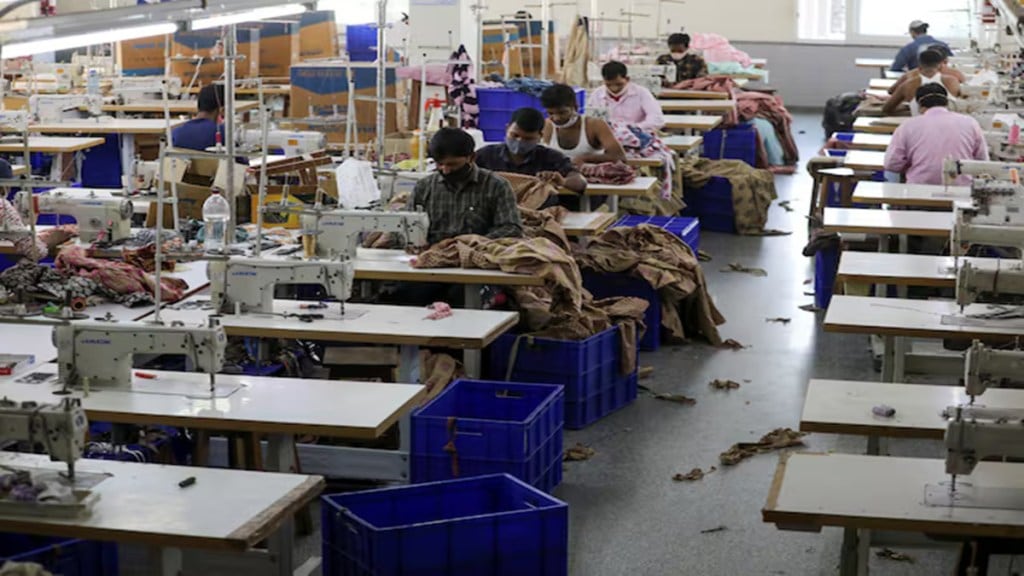By Ashok Gulati and Ayushi Gupta, Respectively distinguished professor and research associate at ICRIER
India has a deep-rooted tradition in textiles and apparel (T&A). It employs a workforce of 45 million and contributes 2.3% to the GDP. But its share in global trade remains low (4.2%), merely $37.8 billion out of $897.8 billion. A closer look at the apparel segment alone (under HS codes 61 and 62) shows India’s share in global trade is even lower, at 3% ($15.7 billion out of $529.3 billion). More disturbingly, this share has remained stagnant for the past two decades.
Despite these modest numbers, India has set a target of $40 billion in apparel exports by 2030. But in the last few years, apparel exports have declined annually on average by 2%. If we had sustained the stronger average annual growth rate (AAGR) of 8.5% (2004-2017), we would have reached $31 billion by 2030. An AAGR of 5.3% (2004-2023) suggests exports could reach $21 billion by 2030. These numbers make it clear that without a significant shift in policy and strategy, the $40-billion goal will remain a daydream.
Our research points to a fundamental constraint: lack of scale. Put simply, we are too many, too small, and too dispersed. Over 80% of India’s apparel units are micro, small, and medium enterprises; meanwhile, China and Vietnam have built large-scale, export-oriented factories backed by integrated production systems. Even Bangladesh has found a way to either scale up or have single-window “buying houses” that take large orders and get them executed from factories.
This helps them attract global buyers who demand volume, besides reducing unit costs, shortening delivery timelines, and generating mass formal employment. For a country like India with a young population, the garment industry offers a wonderful opportunity to expand employment and grab a larger share of the global market.
While overall garment manufacturing remains fragmented, there is a silver lining that shows what scale can achieve. The most powerful example is that of Shahi Exports. Founded by Sarla Ahuja in 1974, the firm began a stitching unit with a team of 15 women producing 200 pieces a day. Today, it is India’s largest apparel exporter, operating over 50 factories, three processing mills across eight states, and employing more than 100,000 workers — 70% of them women.
With over a billion dollars in annual revenue, Shahi Exports is well known as “Sarla’s garment miracle”. What sets it apart is not just scale but how it got there: it evolved over decades with a focus on professionalising operations, investing in vertical integration (with 80% of fabric produced in-house), and building an enterprise that treats profits and its people as complementary, emphasising women’s employment and environmental sustainability.
India needs bold reforms that enable scale. First, capital must be made accessible and affordable for scale-focused investments. A structured capital subsidy of 25-30%, linked to the size of the unit, can provide the initial push. This could be targeted at enterprises meeting a minimum threshold of say 1,000 machines (as per the draft production-linked incentive [PLI] 2.0 scheme) to ensure viability and scale. Additionally, a five- to seven-year tax holiday for units would allow investments to mature and become competitive.
India’s cost of capital remains high, averaging 9%, compared to 3-3.5% in China and starting from 4.5% in Vietnam. In a sector with razor-thin margins (typically 4-5%), such incentives are critical to gain competitiveness. Second, India’s central labour laws have created rigidities, discouraging formal hiring and scale. They need flexibility. Overtime payments are mandated at twice the hourly wage, compared to the International Labour Organisation standard of 1.25 times, adding to cost pressures. Labour accounts for around 30% of garment production costs.
A bold idea could be to link Mahatma Gandhi National Rural Employment Guarantee Act funds (say 25-30%) to subsidise labour costs. This could make labour-intensive units more competitive while generating productive employment on a sustainable basis. Schemes like Samarth should be significantly scaled up to provide short-cycle, demand-linked skilling, especially for women. India’s low female labour force participation and high youth unemployment demand job creation, not just income transfers.
Third, at least two of the seven PM Mega Integrated Textile Region and Apparel parks should be designated as garment-focused hubs, particularly in states like Uttar Pradesh and Madhya Pradesh where labour costs are low and worker migration to southern garment hubs is high. Bringing manufacturing closer to the workforce can reduce costs, boost underdeveloped regions, and build more inclusive industrialisation. Finally, India must rethink its incentive architecture. What the garment sector needs is an export-linked incentive rather than just PLI — schemes that reward firms not just for producing more, but for competing and winning in global markets.
The garment industry deserves policy attention because it sits at the intersection of mass employment and maximum value addition. Success in the segment doesn’t just lift export numbers, but also creates demand that pulls up the entire textile value chain. However, to realise this potential, India must move beyond business as usual. If we are to build 10 Shahi Exports in the next 10 years, we need bold policies and swift execution. Our policymakers must rise to this challenge.
Views are personal

